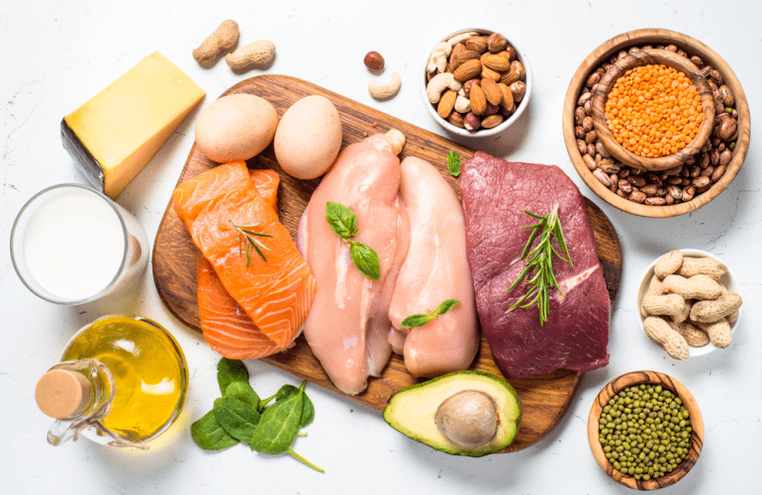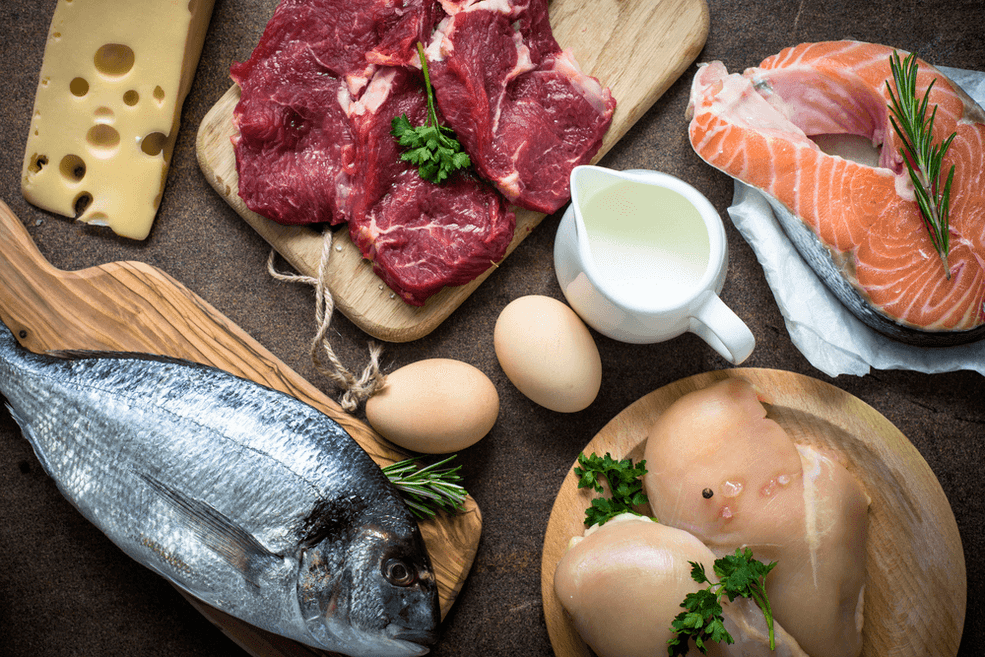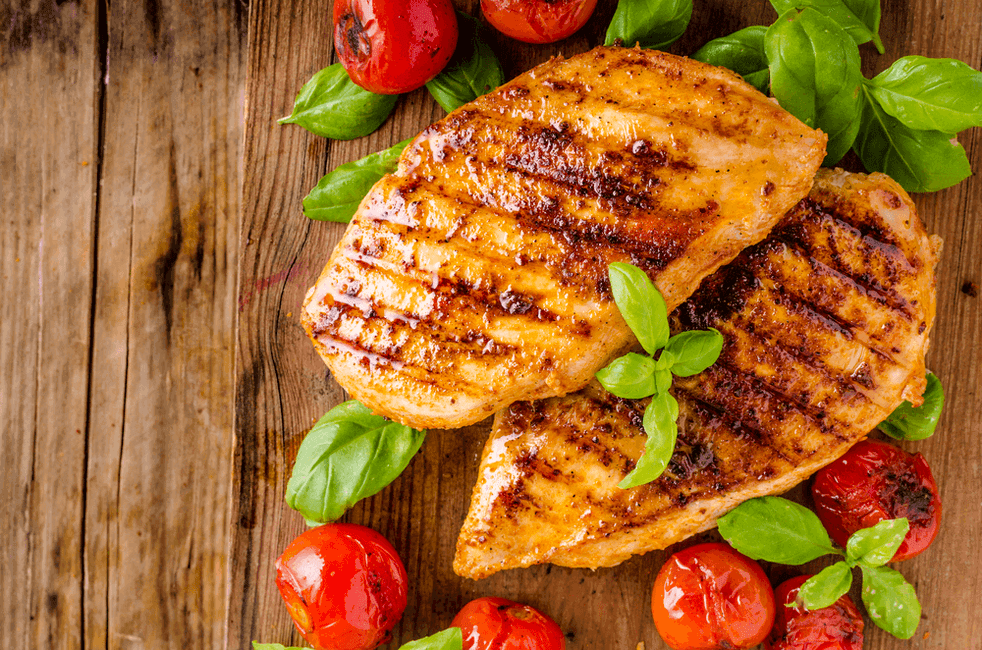
In most cases, overweight is caused by an excessive supply of adipose tissue, which is deposited as a result of the chemical transformations of carbohydrates entering the body. And although obesity is based on certain breaks in the endocrine and digestive systems, the most comfortable and painless solution to the problem is still to limit the source of excess calories in the daily nutrition process. By stopping or critically reducing the stomach's access to easily digestible carbohydrates using a carbohydrate-free diet, we automatically start the reaction of burning accumulated reserves.
what is a no-carb diet
It is on the basis of a carbohydrate-free diet that athletes lose extra pounds before competitions, artists on the night before filming, and public figures when they need to get in shape. Athletes even have a special term for such nutrition. It is called "drying" - by eliminating carbohydrates from the diet, subcutaneous fat deposits are removed and the relief and elasticity of ligaments and muscles is improved. But life without carbohydrates is a difficult test for those with a sweet tooth, who are forced to radically change their taste preferences, and for quite a long time. It requires not only determination, but also a fair amount of patience and willpower.
There is also the other side of the coin - the complete rejection of carbohydrates in favor of protein products causes the condition that nutritionists give the not entirely correct term carbophobia (literally "fear of carbohydrates"). Avoiding the smallest piece of bread or a piece of sugar like fire, without thinking about anything other than losing weight, sitting for months "on omelettes and cutlets, " fans of a carbohydrate-free diet, without a doubt "to earn"digestive and metabolic problems, in some cases fraught with disorders of the higher nervous system, activities, memory loss, depression and sociopathy.
Long-term or continuous rejection of carbohydrates causes a disorder of the acid-base balance towards acidification of the body, which leads to reduced immunity and premature aging. A side effect of a long low-carbohydrate diet is problems with the intestines, kidneys, arthritis, gout and other ailments.
Below we will look at some examples of a carbohydrate-free diet and a scheme for their use, which allows you to normalize metabolic processes, get rid of excess weight and at the same time not go to extremes, pump the body to capacity withproteins. of animal origin and are far from harmless chemistry and energy.
Biochemical and anatomical basis of a low-carbohydrate diet
The decisive argument for a low-carbohydrate diet is the body's reaction to even a small amount of sugar entering the stomach. The pancreas immediately begins to reflexively release insulin into the blood, and digestive enzymes into the stomach, which immediately increases appetite (that's why they say appetite comes with eating). As a result, when we eat foods rich in carbohydrates, we are almost always eating more than we objectively need. Protein foods do not have such a seductive effect on the "pancreas", the production of hormones and enzymes proceeds in working order, saturation occurs gradually and completely. Proteins are broken down in the gastrointestinal tract much longer than carbohydrates, so the feeling of fullness lasts for several hours, and the need for snacks does not arise if you have three or four protein meals a day.
Principle 250 kcal
Probably, it will not be possible to give up carbohydrates completely - simply because even in protein dishes they are included completely, although in minimal quantities. But this is not scary, the main thing is that the specified number of kilograms of "carbohydrate" is not exceeded.
A low-carbohydrate diet certainly requires willpower, but its use can be very disciplined. It is enough to remember only one number - 250. This is the number of energy units - calories, which are in the daily amount of carbohydrates entering the body. Of course, we will have to carefully weigh all the dishes and calculate their energy value using special tables or notes on the restaurant menu, but this is an almost unavoidable cost of any strict diet.
Mono-carbohydrate diet: effective, but monotonous
An ideal low-carbohydrate diet for guaranteed and fast weight loss involves separate daily meals - on the first day of the diet you eat only chicken, on the second - only eggs, on the third - only cheese or cottage cheese. This is the fastest way, but also the most "tasteless" and monotonous way to lose weight. Not everyone is ready for such sacrifices, so we will lose weight without fanaticism and combine business with pleasure - a healing effect with gastronomic pleasures, promised by tasty and healthy products based on animal and plant proteins.
By the way, the infamous 250 kilocalories Carbohydrates mentioned above should also be obtained not from buns and sweets, but by including complex carbohydrates (long to digest) in the diet - vegetables that are not rich in starch, cereals, completely free of yeast. grain bread.
Basic ingredients of a carbon free menu
Here is a list of protein foods that are intended for a protein diet:
- lean meat - chicken, turkey, rabbit, veal;
- excrement - stewed heart and liver;
- duck, chicken, quail egg;
- fillets of sea fish, crabs, shrimps, lobsters, marine cephalopods;
- dairy products - kefir, yogurt, cottage cheese, low-fat sour cream and hard cheese;
- leafy vegetables (cabbage), artichokes, green peas, beans, zucchini, onions, garlic, garden herbs. You can eat mushrooms, but with caution, since mushroom proteins are different from animals;
- berries and sour fruits, as well as avocados;
- nuts and seeds.
Meat and fish should be cooked by steam, in the oven, or on the grill at most, but in any case in a frying pan or deep fryer.
A proper diet does not include sausages, sausages, and pates that contain many questionable additives based on carbohydrates and transgenic fats.
When choosing food suppliers, you must give priority to farms where meat and dairy animals are kept in comfortable conditions and do not receive growth hormones and various antibiotics in their feed. You should not trust price tags in supermarkets - if you are on a diet, carefully read the instructions on the packaging and study in advance the list of food additives, many of which are harmful to health, but usedin manufacturing notorious "healthy products".

Carbohydrates prohibited
Now about the main thing for all diets - what is prohibited. On a low-carbohydrate diet, the following are prohibited:
- bread, except whole grain unleavened;
- everything made from flour - pasta, pizza, pies, khachapuri, cakes, pastries;
- chocolate and confectionery;
- sweet and sour fruits and berries;
- vegetables rich in starch (potatoes, carrots, corn, beets);
- semi-finished industrial products. No matter what manufacturers write on the packaging, they almost always contain carbohydrate additives and preservatives, and even genetically modified fats;
- fruit juices and carbonated beverages;
- alcohol in any form.
Meat eaters will definitely find it hard to resist a glass of red wine with their favorite steak, but here you have to choose: health or pleasure. Alcohol, in addition to its direct toxic effect on the body, is also a powerful appetite stimulant and a high-calorie product - the calories obtained with it can be safely added to the 250 kcal which is the daily limit for a protein diet.
Menu for 7 days

Monday
- Breakfast - Cheesecakes made from low-fat cottage cheese with bran.
- Lunch - vegetable salad with herbs, chicken breast 200 g with herbs.
- Snack - Orange.
- Dinner - Turkey 100 g with stewed vegetables.
Tuesday
- Breakfast - Omelette with vegetable salad or stewed vegetables. Black tea without sugar.
- Lunch - vegetable cream soup with pieces of turkey or chicken.
- Snack - green apple.
- Dinner - Salmon baked in the oven.
Wednesday
- Breakfast - unsweetened muesli with milk and dried apricots or other dried fruit.
- Lunch - Lentil soup with chicken breast.
- Snack - Almonds or other nuts (a handful).
- Dinner - Salad of cherry tomatoes, arugula, canned tuna (1 can) and mozzarella.
Thursday
- Breakfast - Oatmeal with water without sugar. One banana (can be cut and added to oatmeal).
- Lunch - vegetable soup with veal meatballs.
- Snack - Orange or grapefruit, a glass of citrus juice.
- Dinner - Low-fat steamed fish.
Friday
- Breakfast - A mixture of 1 banana, a glass of fresh or thawed pitted cherries and a glass of milk. Mix in a blender.
- Lunch - chicken pilaf 200 g.
- Snack - Green tea with a piece of hard cheese.
- Dinner - chicken or turkey with vegetable salad.
Saturday
- Breakfast - egg white omelet. Unsweetened tea. 1 banana.
- Lunch - 100 g boiled chicken breast with brown rice.
- Snack - A sandwich made from unleavened bread, soft cheese, ham, lettuce and sliced tomatoes.
- Dinner - vegetable sauté with meat. A glass of kefir or unsweetened drinking yogurt.
Sunday
- Breakfast - 1 hard-boiled egg. diet bread with hard cheese.
- Lunch - Cream soup of champignons or wild mushrooms. You can add chopped turkey or chicken to the soup.
- Snack - Orange, green apple or handful of nuts.
- Dinner - vegetable salad, 100 g meat or oven baked fish.
porridge for a low-carbohydrate diet
There are porridges on water rather than borders. When you are on a diet without carbohydrates, it is recommended to include four types of grain on the menu:
| No. | Name | Protein content | Carbohydrate content |
|---|---|---|---|
| 1 | buckwheat | eleven% | 68% |
| 2 | pea | 21% | 50% |
| 3 | Oatmeal | 12% | 65% |
| 4 | when | 14% | 64% |
Porridges are especially useful in the periods between periods of active weight loss, when you need to restore the balance of fats, proteins and carbohydrates in the body.
Another questionable option: the keto diet In the United States, with its infamous fast food culture, the ketogenic diet is a type of carbohydrate-free diet, which allows you to eat large quantities of not only proteins, but also animal fats. This scheme has both supporters and opponents. The main argument of the latter is the damage of fatty foods to the cardiovascular system, due to the deposition of cholesterol on the walls of the blood vessels. It's hard to disagree with this.
Timeliness of diet and precautions
The effect of the diet begins to be seen after two or three weeks; with separate intense meals daily, you can lose weight within a week after switching to proteins. If you limit quickly digestible food will almost inevitably cause intestinal disorders - constipation, flatulence, due to a decrease in the plant fiber content in food. When you are eating a meat menu or eating fish and seafood, you must drink at least two liters of liquid per day, eat soups, and if you have persistent constipation, take mild laxatives. After a month, to avoid the development of constant carbophobia, you should take a break - from two to four weeks. It will restore the disturbed protein-carbohydrate balance and intestinal motility. When taking a break from a diet, you should not go too far: the diet should be balanced and strict, otherwise you will not lose all your gains, but you will also get extra fat deposits, and you will have tostart a fight. against all added weight again.














































































